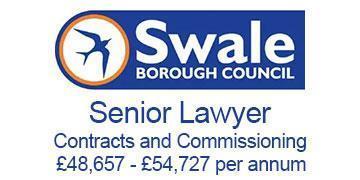Legal professionals are essential to buying and selling homes. Clients rely on their solicitor or conveyancer to navigate one of life's biggest financial decisions. Our job is to ensure the transaction forms used in this process are not just accurate but practical.

When designing the sixth edition of the TA6, we engaged with the industry from the start. More than 1,200 solicitors, licensed conveyancers, estate agents and sellers provided feedback on the previous iteration.
We tested the new form with users and set up a working group with expertise in residential conveyancing to get it right. The result of this joint effort is a simpler form with clearer explanatory notes. Sellers can feel more confident filling it out and knowing when to get advice from their solicitor. The better designed form should mean that sellers and buyers will have less need to ask for advice from their conveyancer. This approach reflects our broader commitment to property solicitors. To listen, learn and work to improve their practice.
The TA6 update is one example of how we’re evolving our offer to better support them.
For almost a year, the TA6 working group has been developing the sixth edition of the TA6 and the accompanying explanatory notes. The group has eleven members — most practise residential conveyancing at different sized firms, with eight drawn from our conveyancing and land law committee and four serving as council members.
User testing on the sixth edition was carried out in June and July and included in-depth interviews with conveyancers and sellers and eye-tracked usability exercises with sellers. Testing the form with sellers and conveyancers helped us make sure it was clear and logical. We also used the results to improve the explanatory notes.
The sixth edition of the TA6 replaces the fourth and fifth editions. Those familiar with the fourth edition will notice similarities in the updated structure of the sixth edition.
Notably, questions on material information that were added to the fifth edition to comply with guidance from the National Trading Standards Estate and Letting Agency Team (NTSELAT) were removed in response to member feedback.
NTSELAT’s guidance was subsequently withdrawn in May, leading us to stop work on a separate, optional material information form. We will consider what help conveyancers and their clients need from us on material information after the results of the recently launched government consultation are known.
The sixth edition’s 15 sections are 10 fewer than the previous edition. During the consultation, participants told us it would be helpful if the form included more checkboxes for when sellers didn't know the answer to a question. In response, we've increased the number of options to select ‘not known’. Feedback from user testing showed that the explanatory notes were too dense, which discouraged sellers from reading them. We rewrote them to be clearer and more accessible, with better signposting and more useful examples.
We heard that firms need time to understand any changes, so we’ve built in a generous transition period of almost six months. The sixth edition will become mandatory for CQS members from 30 March 2026.
Feedback so far shows conveyancers don’t want extensive training but do want early visibility. Find out more about the main changes to the TA6 form. We have included an example of the form, showing the questions and structure. We have also published refreshed TA6 explanatory notes.
Other opportunities to hear about what’s changed and why include the Law Society Property Conference on 15 October 2025 and a free dedicated TA6 webinar on 13 January 2026.
A fifth edition of the TA7 leasehold information form is also being launched at the same time to reflect changes made in the TA6.
Mark Evans is president of the Law Society of England and Wales































2 Readers' comments